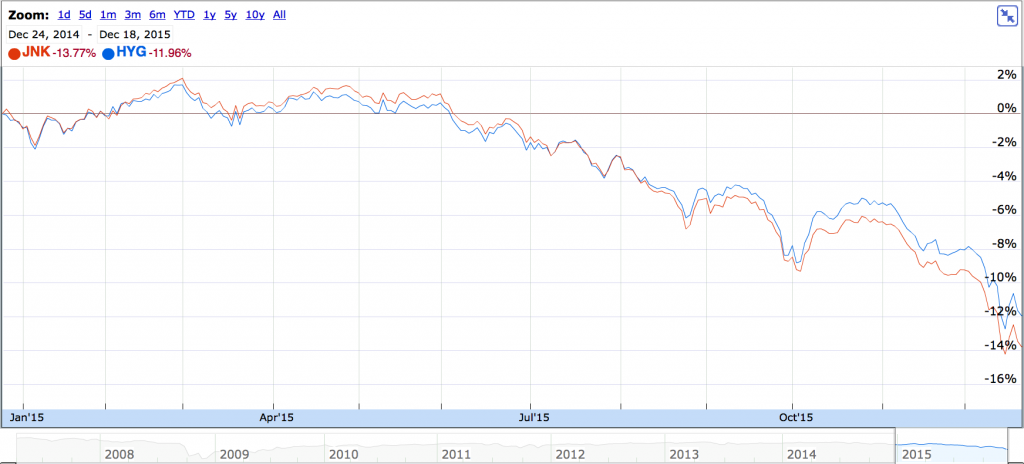High yield bonds have taken several headlines lately, as some analysts believe they signal extreme economic uncertainty and the possibility of a recession. The FOMC meeting and rate hike were key concerns for markets, and helped prompt a 5% YTD decline in the S&P 500 (SPY), but that decision was not the only concern in the market. The credit markets are arguably a more important, albeit less clear issue for investors right now.
So what are high yield bonds?
Corporations can borrow money in several ways, but the most common is to issue bonds. These bonds, like U.S. Treasuries, pay an interest rate to bondholders who can choose to receive those payments by buying the bonds. Corporations will use the cash they get from selling those bonds for all sorts of things, and the interest rate they pay bondholders will depend on several things, including their credit rating and future expectations for interest rates, inflation, and so on.
There are many credit ratings that are issued by the large rating agencies: Moody’s, Standard & Poor’s, and Fitch Ratings. You can read about those ratings here. Half of the ratings that a company can have are in the “non-investment grade” realm. Bonds issued by companies with these ratings are known as “high yield bonds” or “junk bonds”.
They tend to pay a higher interest rate than higher quality bonds, making them appealing for interest-hungry investors, but they also have a higher chance of defaulting or missing payments, making them unappealing for risk-averse investors.
In the last few months, high yield bonds have seen a massive decline, which can be seen by looking at the price performance of the ETFs that track them: HYG and JNK:

Both have had a terrible year, but declines have accelerated in recent weeks, bringing the ETFs to suffer double-digit declines for 2015.
There are several reasons this is happening, but the most important is that default rates are rising. In part this is a result of lower commodity costs that are causing the least robust energy companies to default on debt, but some analysts believe that there is a contagion risk in which other companies in other sectors will see higher defaults due to what’s happening in energy.
The real risk that the high yield market is signaling is contentious but worth considering. There is a possibility that default rates will continue to rise because companies’ profitability has dwindled and they can no longer service their debts. If this trend continues, we could see a lot of people suffer: bondholders, financial institutions, employees of these companies, the companies themselves, and the company shareholders. If the trend spreads enough, it could cause GDP growth to decelerate or even go negative. In other words, it could ignite a recession.
The likelihood of this scenario is hotly contested, but it is a consideration that investors now need to begin to think about before considering what they do in both the bond and stock markets. This also shows that, to perform well in the stock market, it isn’t enough to know stocks; you need to understand the credit markets too.
